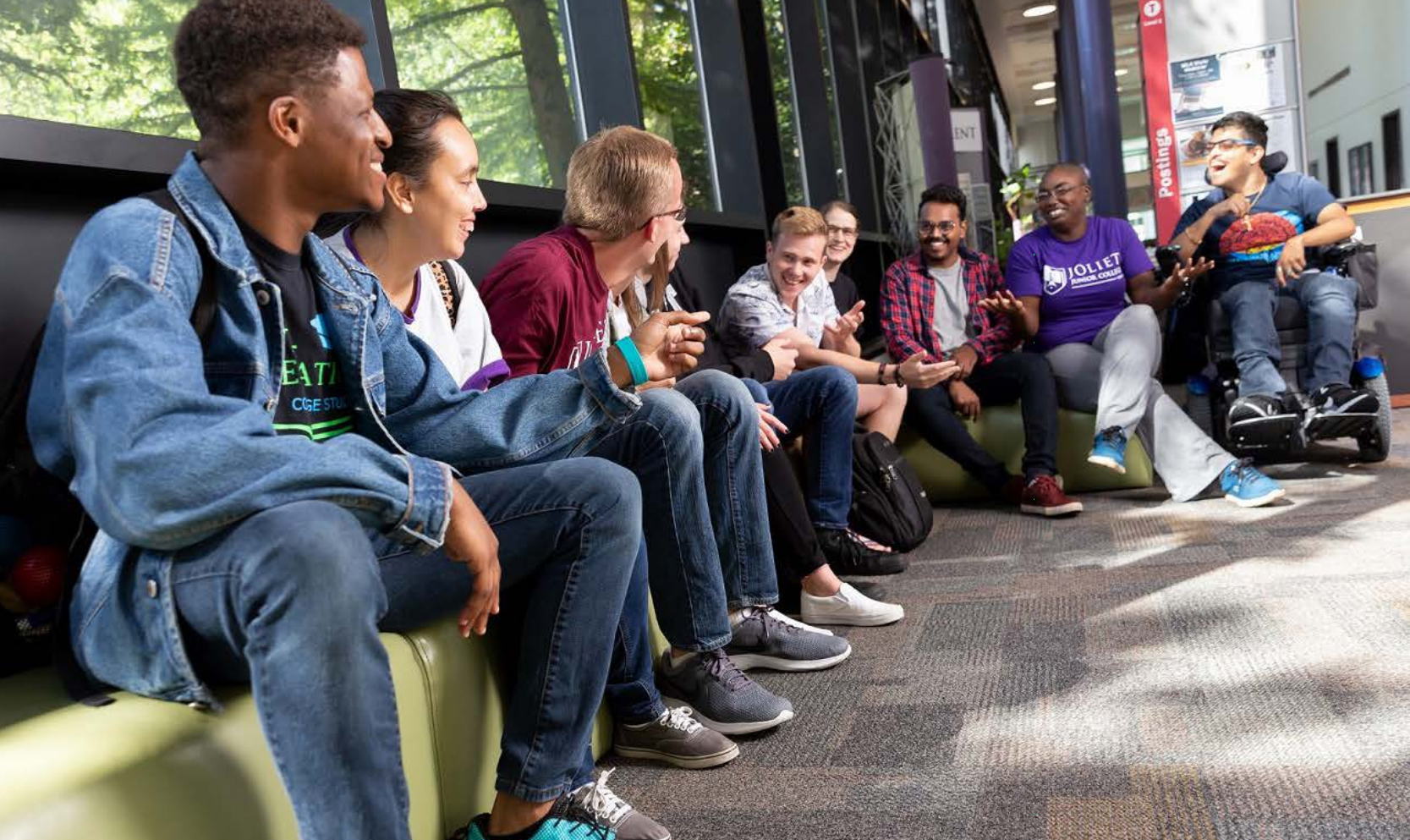Three Goals: Equity, Sustainability, and Growth
The strategies outlined in this plan are designed to close equity gaps, create educational paths that are financially sustainable for students and higher education institutions, and foster economic and institutional growth for a thriving Illinois.
 EQUITY
EQUITY
It’s time to close the equity gaps that have left too many students behind.
Illinois’ population is becoming more and more diverse, and the labor market increasingly demands post-high school education and ongoing training for all but entry-level jobs. This means the Illinois higher education system must do much better in serving students of color, low-income students, rural students, and working adults.
Data shows equity gaps throughout the educational path for too many students. We have untapped potential in the adults who haven’t yet received a postsecondary degree/credential.
We need a higher education ecosystem in Illinois focused on meeting the needs and supporting the success of historically underserved and underrepresented students. Today there is no “typical” higher education student and no single path that serves all students. We need broad paths and specific strategies to progress for all regardless of race, ethnicity, class, gender, geography, or age—for high school graduates and adult learners—so all can contribute to and benefit from economic growth. It is both a moral imperative and an economic imperative.
It is long past time for our educational system to recognize and address these needs and be accountable for closing equity gaps.
To thrive, this plan calls on us to close equity gaps that disproportionally impact African American, Latinx, and other students of color, low-income students, working adults, and students from rural communities.
 SUSTAINABILITY
SUSTAINABILITY
Illinois needs educational paths that are financially sustainable for students and for higher education institutions to meet our vision of a thriving Illinois. If we believe in the power of higher education to transform lives and create a better future, we must invest more and invest through an equitable, stable, and sufficient funding system. We want higher education to be affordable for students and families. We need a higher education system that is financially ready for the future. One with equitable, reliable investments to serve our students and our state.
Until the recent investments by Governor JB Pritzker and the General Assembly, Illinois’ long history of underfunding higher education has made many students reasonably hesitant to commit to our public colleges and universities, while others have shouldered massive individual debts to make up for funding failures and insufficient state and federal student financial aid. These uncertainties not only caused Illinois to lose valuable intellectual and economic capital in those students who never returned, but the local economies that have grown around our colleges and universities also suffered.
As student and workforce needs have changed, the state funding system simply has not kept up. It is time to build a stronger financial future for individuals and institutions of higher learning. That will build a stronger financial future for Illinois.
To thrive, this plan calls for reliable, equitable, and sufficient state investments through a new higher education funding system.
 GROWTH
GROWTH
Talent, research, and innovation drive our economy. Illinois cannot thrive without a future-ready workforce plus the institutional research and innovation that are crucial to driving economic growth. To get there, we need a strong, nimble, and innovative higher education system, including career education, inclusive talent development, innovation, and job creation for tomorrow. Institutional contributions to idea generation, innovation, invention, economic engagement and community development are essential for the Illinois to thrive.
The pandemic has also shown us how quickly the nature of work can evolve. Even before the virus, we have long known that the future of work looks very different from the past. More people change jobs mid-career and have many employers throughout their working lives. Our more fluid career trajectories call for nimble educational models that can meet student needs beyond traditional two- and four-year models that come directly after high school.
To grow our state, our higher education institutions must lead the way in educating and preparing people for the future of work so that students can navigate at all stages of their careers. Regional higher education and employer partnerships are essential to preparing the workforce for the growth areas outlined in the state’s economic development plan. These partnerships can build upon the state’s community colleges that continue to be the economic engines of their local communities.
Higher education-led innovation can also drive inclusive economic growth. Investments in efforts like the Discovery Partners Institute and the Illinois Innovation Network reach across the state and anchor more than enterprise—they can also support a more inclusive economy.
We must align our higher education strategies with our economic development plans and our understanding about the future of work to build more robust, more diverse talent pipelines and to support research and innovation that create new enterprises. Together higher education strengthens Illinois communities.
To thrive, this plan calls for an increase in diverse talent pipelines prepared for the future of work, engagement of employers and industry leaders, and innovation toward inclusive economic growth and development.
Higher education has always been a path to a better future, for individuals, communities, and the entire state of Illinois. The challenge of the next decade is to focus on creating broad, sustainable, and equitable paths to a prosperous future for every learner, leader, and community that we engage. We can do this with a commitment to a higher education ecosystem that reinforces equity, sustainability, and growth. That’s the picture of a thriving Illinois.
